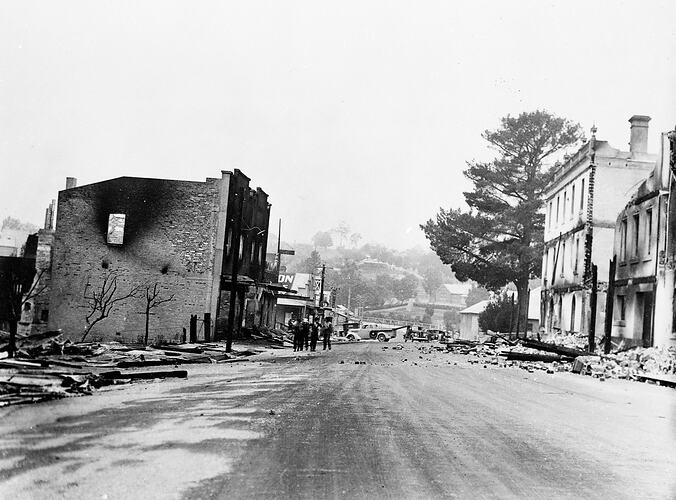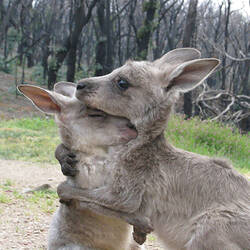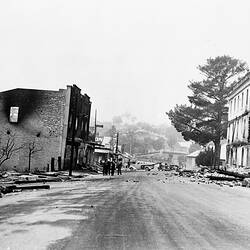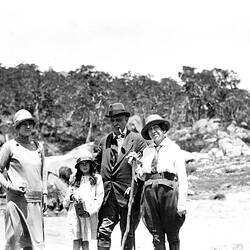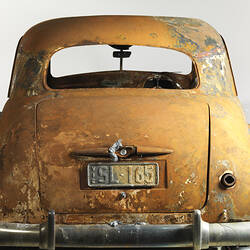Summary
Black Friday, on 13 January 1939, was the product of several years of drought in Victoria followed by high temperatures and strong winds. These fanned several fires into a massive fire front, which swept over the mountain country in the north-east of Victoria, and along the coast in the south-west.
Smoke covered Victoria and approximately 75 per cent of the state was to some extent affected by the fire. The fires claimed 36 lives in Victoria on Black Friday while total number of deaths across January were 71. More than 700 homes, 69 sawmills, many businesses, farms and other buildings; approximately 1300 buildings were lost.
This image taken in the town of Omeo after the 1939 bushfires. The original Golden Age Hotel is on the right. The image is indicative of the indiscriminate nature of bushfires. One side of the street has seemingly been flattened by fire the buildings on the other side appears relatively untouched.
Description of Content
The town of Omeo after the 1939 bushfires. The Golden Age Hotel is on the right.
Significance
Fire has always been a part of the Australian environment, shaping the landscape over millions of years.
Australia's First Peoples have used fire to care for country for thousands of years. These fires encourage the growth of grasslands to enhance hunting, reduce levels of fuel and keep vegetation from becoming dense.
While bushfires occur every year in Victoria, some have a devastating impact on communities and landscapes. The most significant of these recorded bushfires have been named after the day of the week in which they occurred: for example, Black Thursday 1851, Black Monday 1865, Black Sunday 1926, Red Tuesday 1898, Black Friday 1939, Ash Wednesday 1983 - and Black Saturday 2009.
Bushfires threaten life and property but are also a natural and essential feature of our ecosystem and vital for regeneration of some plants. The fire-dependent eucalypt forests of Victoria, together with drier and more extreme weather conditions, make this the one of the most fire-prone places on earth.
As climate is becoming more variable and more people are living closer to bushland, fire will continue to impact our lives and shape our history.
More Information
-
Collection Names
The Biggest Family Album in Australia, Victorian Bushfires Collection
-
Collecting Areas
-
Acquisition Information
Copied from C & J Bradbury, 10 Mar 1986
-
Place & Date Depicted
-
Creator
-
Format
Negative, 35 mm, Black & White
-
Classification
-
Category
-
Discipline
-
Type of item
-
Keywords
Fires, Hotels, Motor Cars, Motor Trucks, Natural Disasters, Ruins, Townships, Bushfires
